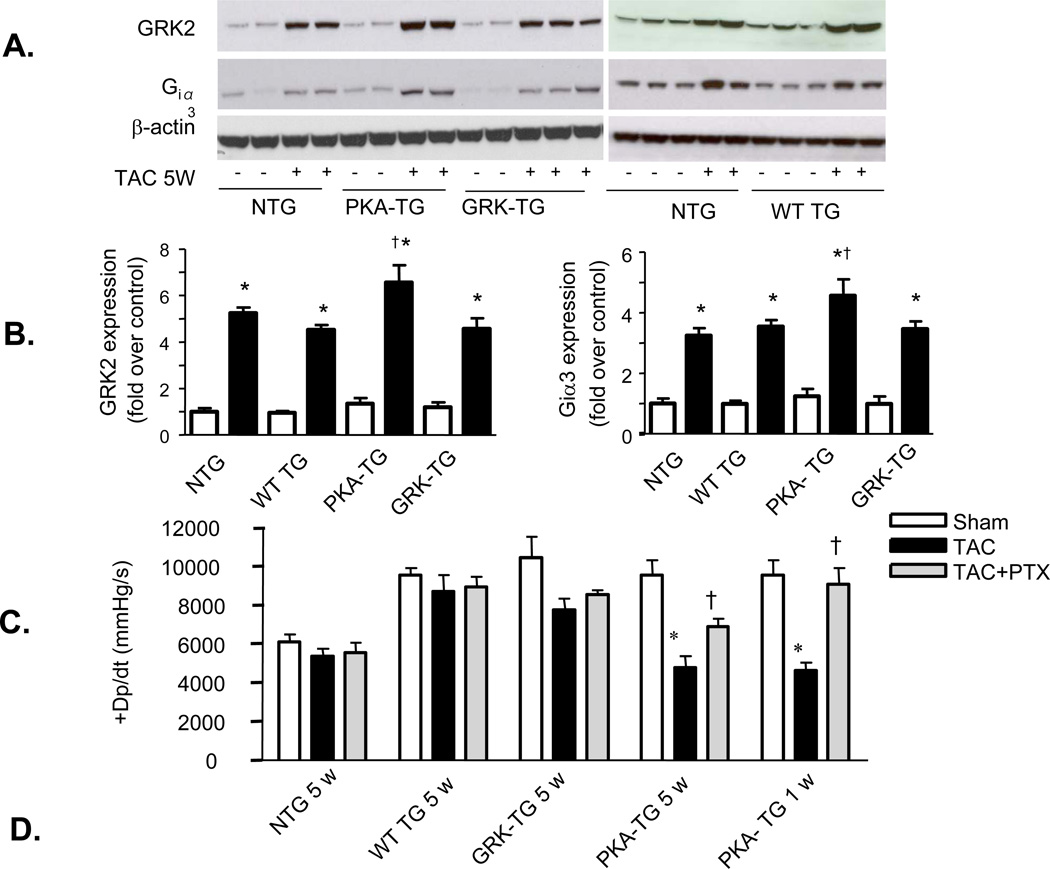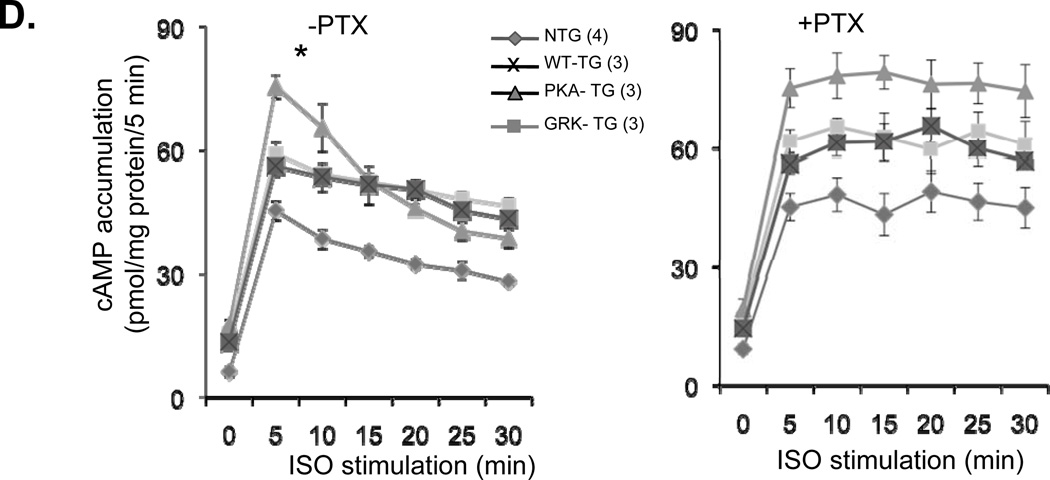Figure 6. TAC-induced heart failure is associated with greater increases in Gi and GRK2 expression and inhibition of Gi signaling with PTX restores cardiac contractility and blocks the decay of cAMP accumulation by ISO in PKA- TG mouse hearts.
(A, B) Panel A shows representative Western bolts using a specific antibody reacting with GRK2 or Giα3 to assay GRK2 and Giα3 protein levels in hearts from NTG, WT TG, PKA- TG or GRK2- TG mice. β-actin was used as a control for protein loading. Panel B displays the average data (n=4–6 for each group, *p<0.01 v.s. respective Sham; †p<0.05 v.s. other three groups with TAC. (C) PTX restored the blunted cardiac contractility in PKA- TG mice subjected to 1 week or 5 weeks TAC (n=5–13, *p<0.05 v.s. respective Sham; †P<0.05 v.s. respective TAC). Note that PTX treatment fully restored contractile response in the early stage heart failure in PKA- TG mice subjected to 1 week TAC and significantly improved cardiac contractility even in the later stage heart failure in PKA- TG mice after 5 weeks TAC. (D) The decay of cAMP accumulation evoked by ISO (left panel) is prevented by PTX treatment (right panel). Cardiomyocytes from NTG, WT-, PKA-, GRK- TG mice were stimulated with isoproterenol (ISO, 10 µM). At each indicated time point, cells were treated with 200 µM of IBMX (3-isobutyl-1-methylxanthine) for 5 minutes before stopping reaction to accumulate cAMP. Note that the decay of cAMP response is accelerated in cardiomyocytes from PKA- TG mice compared to that of other groups, and that this genotype-specific difference is prevented by PTX treatment. *P<0.05 v.s. other three strains.


